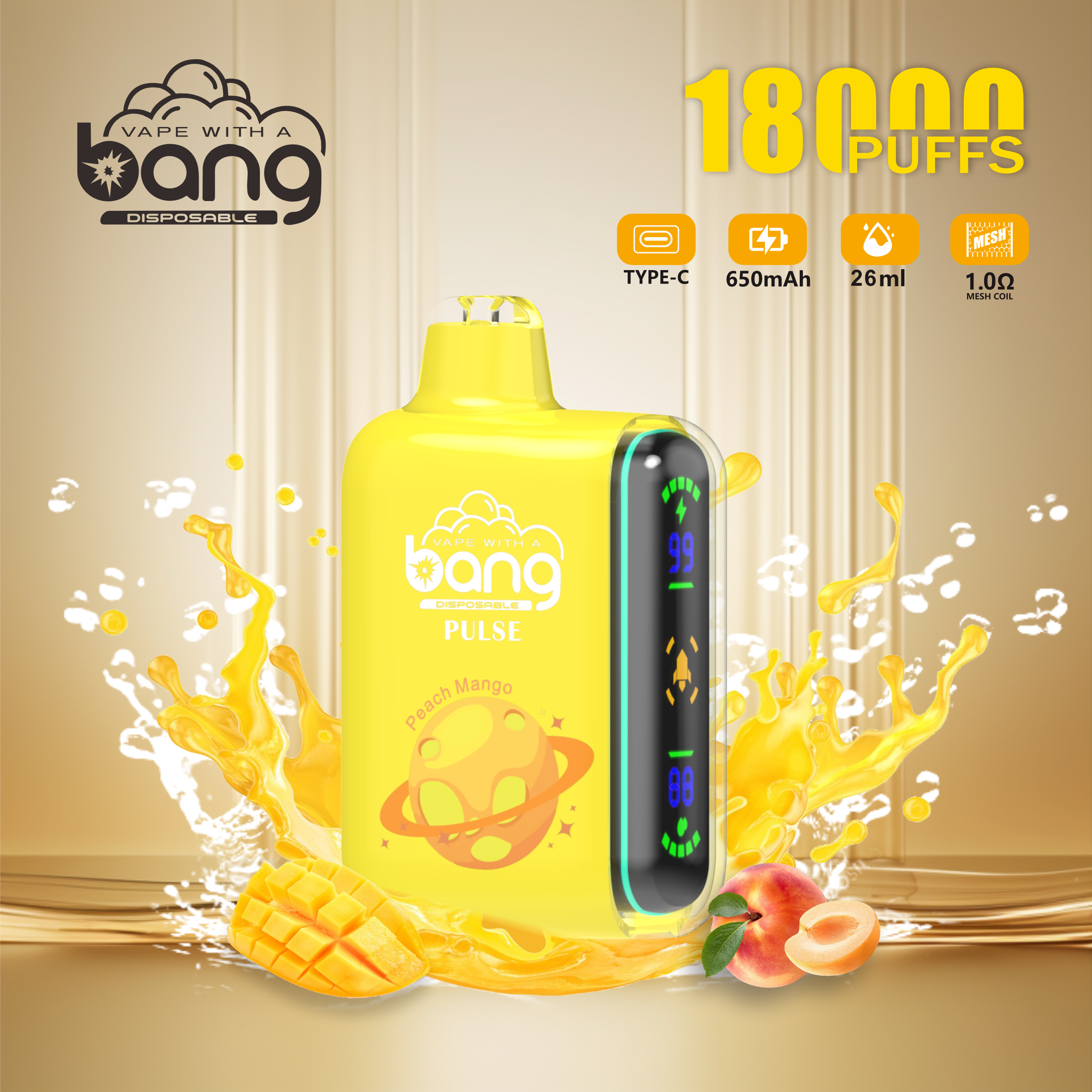Vape Recycling: The Ultimate Guide to Safely Dispose of E-Cigarettes
Vape Recycling: The Ultimate Guide to Safely Dispose of E-Cigarettes
The sleek designs and enticing flavors of disposable vapes have driven their massive popularity. But behind the convenience lies a rapidly escalating environmental crisis: vape waste. Millions of these devices, packed with valuable resources and hazardous materials, are discarded improperly every week, ending up in landfills or littering our streets and waterways. This guide dives deep into the crucial practice of vape recycling, explaining why it's essential and how you can participate effectively.

I. The Growing Problem of Vape Waste
· Explosive Growth, Explosive Waste: Disposable vapes, designed for single use, dominate the market. In the US alone, consumers purchase roughly 12 million disposable vapes per month (Circularity Group, 2025). A staggering 5 million are discarded incorrectly every week in the UK (Material Focus, 2025).
· Toxic Components: While compact, vapes contain a complex mix of materials:
o Lithium-ion Batteries: Highly flammable if damaged. Landfill fires caused by batteries are a major hazard for waste management workers.
o Heavy Metals: Lead, nickel, chromium, and mercury can leach into soil and groundwater from landfills.
o Plastics: The primary casing persists for centuries.
o Nicotine & E-Liquid Residues: Toxic to wildlife and aquatic ecosystems.
o Circuitry & Copper Wiring: Contains additional metals and electronic components.
· Resource Drain: These devices house valuable, finite resources. The lithium within discarded vapes represents a significant loss. Recent analysis suggests the lithium from just 1.5 million recycled disposable vapes could power approximately 2,500 new electric vehicle batteries (GreenTech Resources, 2025). Throwing them away is literally burying potential.
II. Why Vape Recycling is Non-Negotiable
1. Preventing Environmental Contamination: Proper vape recycling ensures hazardous batteries and toxic chemicals are handled and neutralized safely, preventing soil and water pollution.
2. Conserving Critical Resources: Recovering lithium, copper, aluminum, and specific plastics reduces the need for destructive mining and virgin plastic production, lowering the overall environmental footprint.
3. Enhancing Public Safety: Safely discharging and recycling lithium batteries drastically reduces the risk of fires in waste collection trucks, recycling facilities, and landfills, protecting workers and communities.
4. Promoting a Circular Economy: Vape recycling is a key step towards treating these devices not as trash, but as a source of valuable secondary raw materials, closing the loop on their lifecycle.
5. Combating Litter: Establishing accessible vape recycling channels directly reduces the number of devices littering parks, streets, and beaches.

III. How Vape Recycling Works: The Process
Professional vape recycling involves specialized facilities due to the hazardous components:
1. Collection & Sorting: Devices are gathered through take-back programs, dedicated bins, or hazardous waste events.
2. Safe Battery Removal (Manual): Trained technicians carefully extract lithium-ion batteries. This is the most critical and labor-intensive step for safety.
3. Battery Processing: Extracted batteries are safely discharged and then sent to specialized battery recyclers. Valuable metals like lithium, cobalt, and nickel are recovered.
4. Plastic & Metal Separation: The remaining device housing (plastics and metals) is shredded.
5. Material Recovery:
o Plastics are separated by type (e.g., PP, ABS) using techniques like flotation or optical sorting.
o Metals (copper wires, aluminum bits) are separated using magnets and eddy currents.
6. Refining & Reuse: Recovered plastics are pelletized for use in new products (often non-food grade applications like plastic lumber or industrial components). Recovered metals are smelted and refined for use in new manufacturing.

IV. Where Can You Recycle Your Vapes? Your Vape Recycling Options
Finding the right vape recycling drop-off point is crucial:
1. Retail Take-Back Programs:
1. Dedicated Vape Shops: Many responsible vape retailers offer take-back bins. Always ask!
2. Major Electronics Retailers: Stores like Best Buy (US/CA), Curries (UK), and Officeworks (AU) often accept vapes under their broader battery and e-waste programs. Check their specific website policies first.
2. Local Household Hazardous Waste (HHW) Facilities: Most municipal or county HHW collection sites accept vapes and e-cigarettes. This is often the most reliable and widespread option. Find your local facility using online search tools.
3. Specialized E-Waste Recyclers: Some electronics recycling facilities accept vapes. Confirm directly before dropping off.
4. Mail-Back Programs: Some manufacturers or specialized recyclers offer prepaid mailers for vape recycling. Search online for "vape mail-back recycling program" (e.g., Terra Cycle often partners with brands, though availability varies).
5. Pharmacy Drop-off (Specific Locations): In some regions like Australia, pharmacies participating in the "Return Unwanted Medicines" (RUM) program may accept vapes due to the nicotine content. Always confirm with the specific pharmacy first.
V. Crucial Steps Before Vape Recycling
1. Check Locally: Rules and collection points vary significantly. Use online resources or call your local waste authority.
2. Never Bin or Curbside Recycle: Vapes contain hazardous waste and batteries – they do NOT belong in regular trash or curbside recycling bins.
3. Keep Devices Intact: Do not attempt to disassemble vapes yourself. Leave battery removal to professionals at certified facilities. Simply bring the entire used device.
4. Store Safely Temporarily: Keep used vapes in a cool, dry place away from flammable materials until you can recycle them. Avoid puncturing or crushing them.
VI. Challenges and the Future of Vape Recycling
· Complexity & Cost: Manual disassembly is time-consuming and expensive. High processing costs can be a barrier.
· Lack of Standardization: Device designs vary wildly, making automated disassembly difficult. A push for standardized, easily recyclable designs is needed.
· Consumer Awareness & Access: Many vapers simply don't know vape recycling exists or lack convenient drop-off options.
· Policy & Legislation: Stronger Extended Producer Responsibility (EPR) laws are emerging, forcing manufacturers to fund and manage take-back and recycling programs.
Innovation is Key:
· Design for Recycling: Manufacturers need to prioritize designs using fewer materials, easily separable components, and clearly labelled plastics.
· Improved Automation: Investment in robotics and AI for safer, faster battery extraction and sorting is crucial to scale vape recycling.
· Enhanced Collection Networks: Expanding accessible drop-off points at retailers, vape shops, and public spaces is vital for consumer participation.
VII. Your Role in Responsible Vape Recycling
As a vaper or someone finding a used device, you are the essential first link in the vape recycling chain:
1. Commit to Recycling: Make vape recycling a non-negotiable part of using these products. Never throw them in the trash.
2. Locate Your Drop-Off: Use the resources mentioned above to find your nearest HHW facility, retailer take-back, or other option before you need it.
3. Spread Awareness: Talk to fellow vapers, friends, and family. Encourage your local vape shop to implement a take-back program if they don't have one. Share information about vape recycling.
4. Support Responsible Brands: Where possible, choose brands that actively promote and fund take-back and recycling programs or advocate for better design.
5. Advocate for Change: Support legislation (like EPR schemes) that holds manufacturers accountable for the entire lifecycle of their products, including end-of-life management through vape recycling.
VIII. Conclusion: Vape Recycling is Essential, Not Optional
The environmental toll of disposable vapes is undeniable. Vape recycling is not a niche activity; it's an urgent environmental necessity and a critical step towards resource conservation and a circular economy. While challenges exist in scaling up infrastructure and improving device design, the solutions are clear: manufacturers must take greater responsibility, governments must implement and enforce robust regulations, and consumers must actively participate by utilizing available vape recycling programs.
By choosing to recycle every single vape device, you directly prevent hazardous pollution, conserve valuable resources like lithium, and contribute to a safer, cleaner planet. Don't let your used vape become part of the problem – make vape recycling your consistent habit. Find your local drop-off point today and be part of the solution.






